#construct tutorials
Explore tagged Tumblr posts
Text
throws this at high speeds
#wreck it ralph#wir turbo#turbotastic#turbotime#turbo#flash animation#not a replication I mean actual flash . please do not ask me for a tutorial#because your only answer will be “just download the program”#I despise this creature#miss construction#I procrastinated so hard on this#shakes treat bag#wir
254 notes
·
View notes
Text
How to draw Manga/Anime heads in the rev1999 style!


it's not a rendering tutorial and just the construction of the female head for rev1999(and other anime art style really)
the images have alt text!
I highly recommend practicing by trying to replicate the heads in the wallpapers they provide with this method:
1. draw in the guidelines on the image itself(yes,basically tracing,bare with me)
2. hide the construction and draw the same guidelines beside the image
3. compare to the first construction lines
4. now,with the mistakes in mind,hide both the constructions and the image and try to replicate the constructions from memory
repeat 3-4 until satisfied
you should be able to remember how to draw the heads even without reference after doing this a bunch of times! ヽ(o^▽^o)ノ
#the next tutorial might be about the rendering#or the male heads#really depends on my mood ngl#also this is kinda a sequel to the eye tutorial :D#reverse 1999#rev1999#r1999#art#art tutorial#tutorial#anime#manga#anime head#manga head#head construction#step by step#art guide#guide#step by step guide#art style#art style analysis#digital art#illustration#kaalaa baunaa#tooth fairy#jessica#godofart
157 notes
·
View notes
Text
Thoughts and observations on universal calligraphy applied on neography.
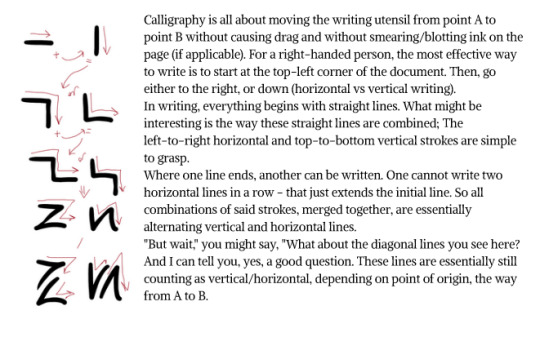

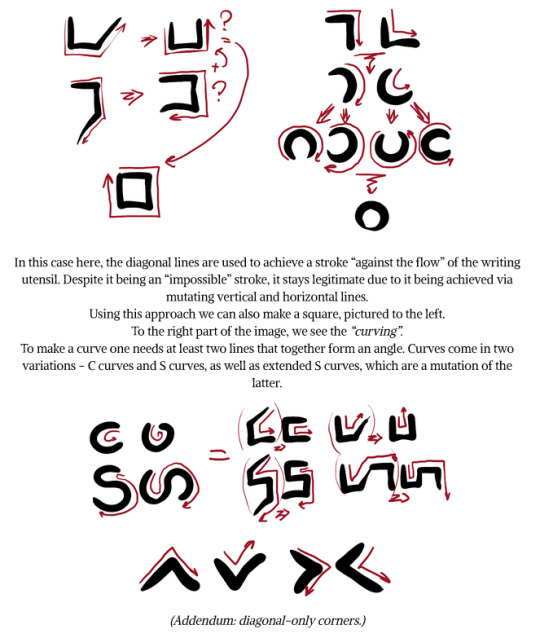


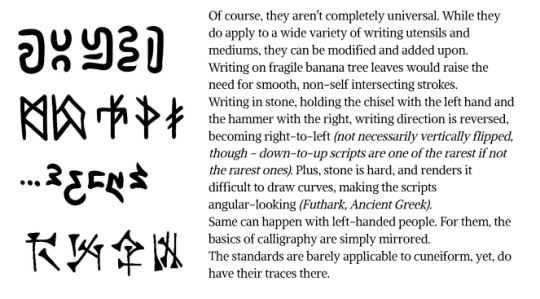
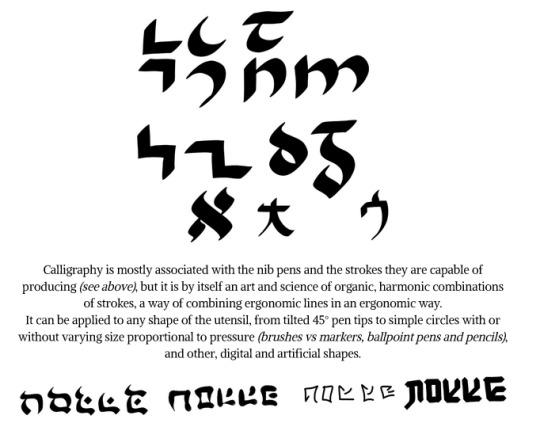

#conlangcrab#conlanging#conlang#constructed language#conlangcrab talks#linguistics#neography#calligraphy tutorial#calligraphy#conscript#art ref#art tutorial#thecrazyneographist
300 notes
·
View notes
Note
artstyl tutorial PELAOSELELWPAPWLEWPLE PRETITIYNPELAAASEEE
ok so i created a mini run down of how i draw bodies and features but of course since ive never given a proper tutorial before if theres anything in this that I haven't clarified or if you want to know something else feel more than welcome to let me know!!
i feel like this art style is prone to change but here shows you how I tend to draw things at the moment ᕕ( ᐛ )ᕗ
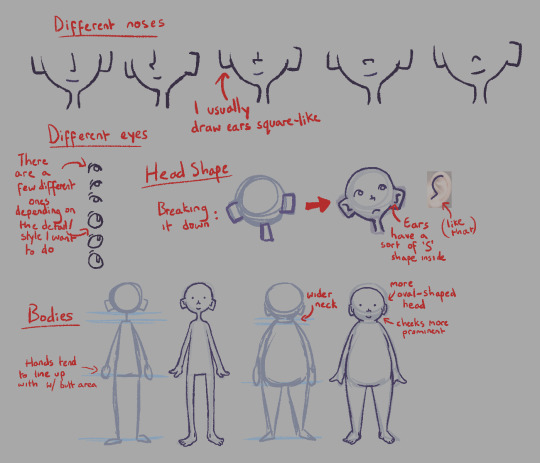
i usually only use this style to draw kids or when doodling so im working on incorporating it into drawing adults and stuff too
#i welcome constructive criticism also#art#illustration#tutorial#art tips#art tutorial#drawing tutorial#asks#artists on tumblr
38 notes
·
View notes
Text
My desire for a mostly-accurate Ancient Greek and Roman wardrobe (and a frankly absurd degree of procrastination) has led me to seriously consider constructing my own vertical warp-weighted loom and learning to weave.
#surely it would be easier to just get my work done#but here I am. looking at weaving tutorials and shield construction#classics#ancient greece#ancient rome#ducky likes rome#tagamemnon
10 notes
·
View notes
Text
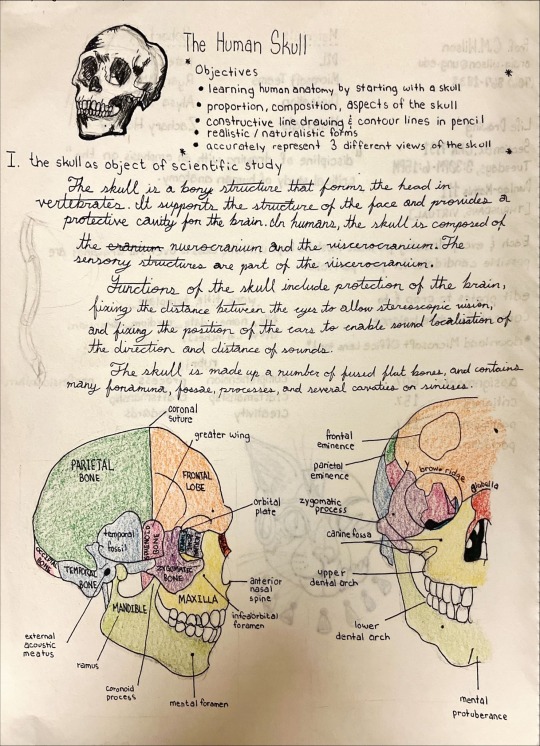



Life Drawing Sketchbook: Human Skull and Constructive Line Drawing
#art#artwork#my art#original art#life drawing#notes#study notes#sketchbook#sketch#sketchblr#note taking#human anatomy#anatomy#constructive line drawing#drawing#art tutorial#art notes
7 notes
·
View notes
Text
Alright I have now actually been working in a bank for a while and I gotta say,,,,,, it kiiiiiinda takes the drama out of Leverage.
Like. Do you know how easy it would be to rob us? Currently the only alarm that requires a code has been permanently disabled for over a month due to construction on the upper floors. The key cards that let you access the vault are given to the tellers- aka the college kids who let just about anyone in if they ask. Hell, I've given spare keycards to employees I didn't even recognise because I'm bad with faces and didn't want to be rude, they were wearing the company color so I just said sure here you go. There's just physical keys lying around everywhere. We also technically have a vault inside the vault that only head tellers can access, but I have never seen it closed.
Like. Robbing us wouldn't take an episode, it wouldn't even take a whole scene. Parker would be downright offended if she came to rob us. She wouldn't even have to crawl through any air vents, pick any locks, anything- literally just wear blue and ask politely to be let into the vault.
We would disappoint Parker so bad
#also none of us have changed our passwords in months#and anyone who just says theyre IT can access p much anything#honestly with the construction crew in the building we're just asking to be robbed#we got people in here 24/7 and no alarms#and the panic buttons get accidentally hit so often i don't think they'd even work#anyway enjoy this tutorial on how to rob [REDACTED] bank#leverage#parker leverage#our only saving grace is we usually only have like 1mil or less cash at any guven time#but still
45 notes
·
View notes
Text



made myself a new artbook out of old aldi bags. hoping to make some art that's as fun and experimental as the book itself
#the covers are glued down construction paper#it's bound with thread from a sewing kit and staples#i did not follow a tutorial i just trial and error'd my way through that hoe
12 notes
·
View notes
Text
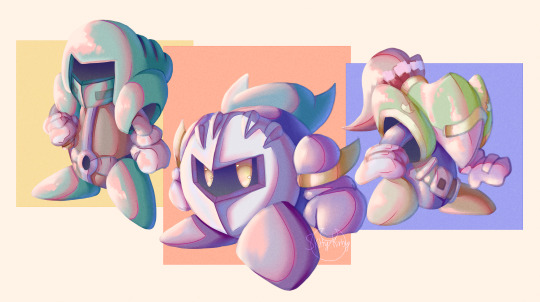
Still pretty burnt out from Art Fight, but I've been checking out different tutorials on how to improve my art in the meanwhile and stumbled upon some digital painting/rendering videos- and seeing as how the two in particular I watched during this were only 6 minutes each I actually had the attention span to follow along and absorb the tips LMAO. //I don't really know how to paint/render, I normally do cell-shading and even that's a tad limited hhh. I should probably focus on the basics after this because whew this is rough. But it was very fun overall, I'd love to try this technique out again sometime! If anyone's interested in the tutorials I followed, both videos are here and here on YouTube by nastume__san.
#kirby#kirby right back at ya#kirby of the stars#hoshi no kaabii#meta knight#kirby anime#blade knight#sword knight#They're my comfort characters your honor#Finally learned how to draw Blade's armor LMAO#if anyone has any tips or tutorials they think would be helpful I'd be more than appreciative#constructive criticism as well <3
117 notes
·
View notes
Text
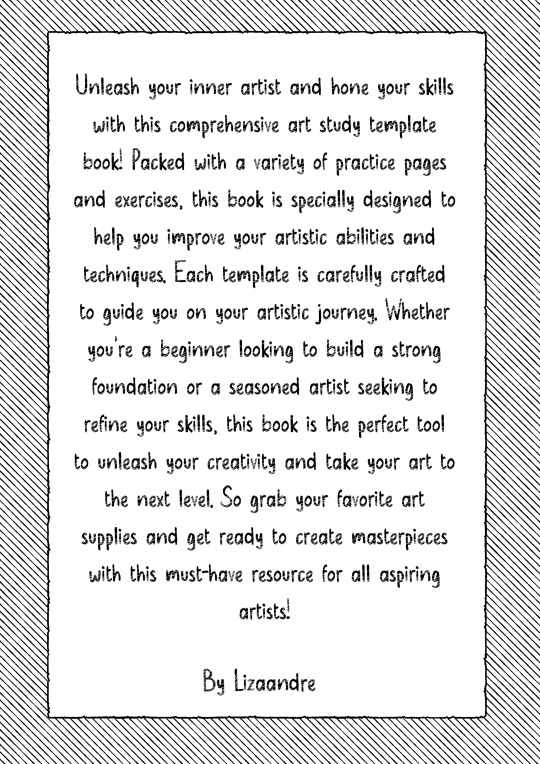
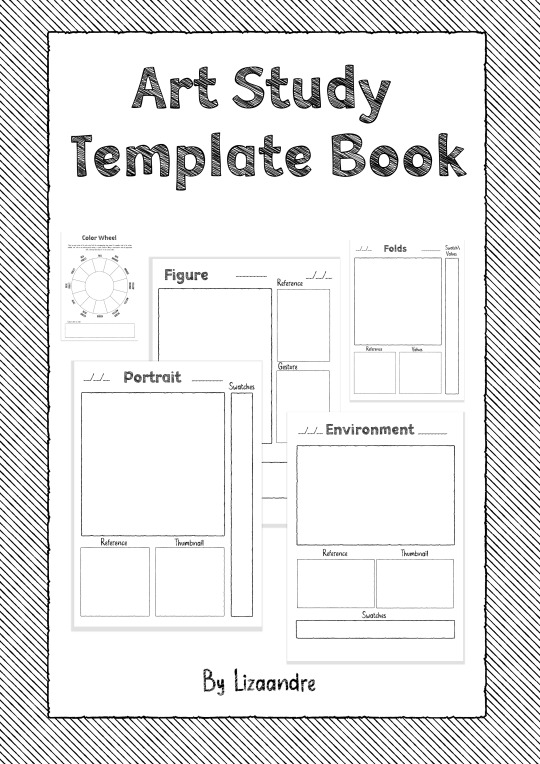
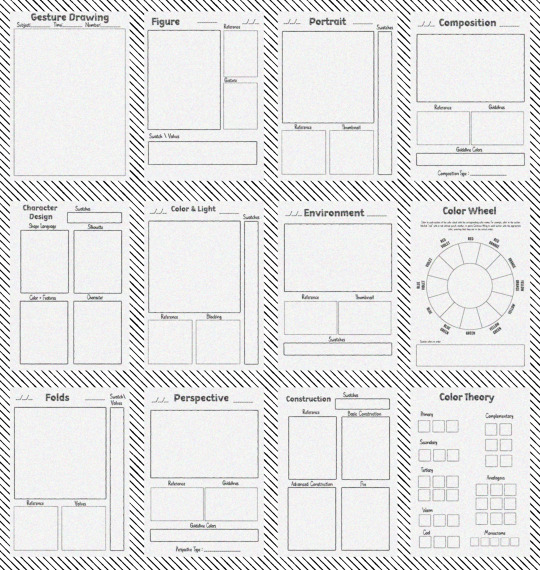
Unleash your creativity with my drawing template low content book - perfect for artists looking to sketch, doodle, and brainstorm new ideas! 🎨✏️
#art#my book#low content book#drawing template#art book#templates#gesture drawing#portrait#figure drawing#composition#character design#color and light#art study#enviroment art#clothing fold art#perspective art#construction art#color wheel#color theory#tutorial#art tutorial#artists on tumblr
16 notes
·
View notes
Text
I SUMMON THEE TROLLS FANDOM
Does anyone have higher res pictures of the Brozone album covers that's preferably front-facing I'm working on creating it irl for my wall

#trolls band together#trolls 3#dreamworks trolls#trolls dreamworks#trolls brozone#trolls movie#im using a cardboard square i got from a calender !#and construction paper....its simple so i think if you can find the album cover you can ALSO make it#or i could make a haphazardly slapped together tutorial lol
35 notes
·
View notes
Note
Had a costume construction question. I've noticed that in fittings for and construction of Howard's skirt (and I believe Boleyn, but I may be confusing it for something else entirely), the waistband appears to be, what I think is, cotton webbing. Do you know what material it is? If you do, is this what the vinyl is placed on top of or is it replaced by the vinyl?
It’s interfacing! It’s a material that’s used on the inside of many clothes (among other projects) to add more shape and stability as needed. You’ll often find it in necklines or waistbands to help them lay flat and maintain shape/quality as areas with a lot of stress out on them. Definitely necessary to include when making Six cosplays. There are some different types in terms of application and weight; the type that's best to use will be dependent on what materials you're using for your cosplay. For more information on all that, there’s this really good post, and if you have further questions about a specific costume/cosplay or material you can always send me another ask or DM @sixcostumerefs.
It should be used in your actual cosplay, between your lining material and your external materials. So if you’re working on Howard, your waistband from inner to outer layers should be lining->interfacing->externally facing base*->velcro for closure where required->pink vinyl. Your skirt would be lining->interfacing with boning->buckram**->pink vinyl->cutouts panel.
*Six has started using a black for that base, but they’ve just used more pink vinyl in the past:

(Look at the skirt closures/mic holsters - Abigail Sparrow’s Breakaway 3.0 skirt was pink all around, while Aline Mayagoitia has a plain black base between the closure and mic holster) **Buckram is a stiffened fabric used to give more shape and structure. Very often used in theatre and dance costumes and is one of my favorite materials to work with. More info here. It's very necessary for Aragon, Boleyn, and Howard skirts and is a big part of what helps them keep their shape. For best use it should go between the boning layer and vinyl layer(s), like I spelled out above for Howard.
#six the musical#six cosplay#tutorial#six cosplay refs#six materials#six costumes#six musical#six howard 2.0#katherine howard six#six construction
28 notes
·
View notes
Text










4 notes
·
View notes
Text
this is soooo dumb of me i know that but like when someone corrects my translations one part of me is like oh! yay! learning new things! learning and growing and improving!
and then another part of me is like “just translate it yourself if you’re so fucking smart, asshole” and it’s like ok calm down time. what is wrong with me fr
#mine#personal#one time someone corrected a translation of mine on a fic i wrote and i’m like listen. here ain’t the place for that so i deleted it#you wanna correct me on YT that’s fine & dandy but let’s stay on topic on ao3 pls#what is wrong w me fr 😭#i guess it’s just like. idk if you can take time and effort out of your day to correct me then just. translate the damn thing yourself#maybe i’m just overreacting because i’m used to people approaching me with malicious intent. and i know these people aren’t being malicious#BUT LIKE. i still get that reaction. and i don’t like it#working on it but ughhhhhh#like obviously there are and always will be people better than me at japanese. i’m just the one who took the risk posting p3wm#BUT STILL like idk go translate it yourself? if you know that i’m wrong & you could do better what is stopping you#have you not the editing skills. cuz it just takes some time and tutorials to learn. i ain’t special#will hawke ever get better at taking constructive criticism? maybe one day#i guess the problem is that i didn’t ask. and yet i still receive it#like where have you found this implied consent of mine. i haven’t implied it#the unsolicited criticism/hate from my zukka time travel fic continues to fucking haunt me ughhhhh#‘ur too sensitive’ - and what of it; bitch#i’ll get over it i’ll learn and grow but god i just needed to get all that out of my system
2 notes
·
View notes
Text
every time i hear anything art-related on tiktok, i immediately get really like... upset? annoyed? idk. unpleasant feeling because it's literally always "we're making fun of this child/beginner for their anatomy or how they color" or whatever else or pretending that an artists deserve to be treated like a piece of corporate media.
i know tiktok is literally the devil and hell incarnate, but i don't think any artist deserves to be targets of mass harassment especially not people who are just starting out (and even more especially not children).
if tiktok was a thing when i was younger and i was posting my art on there, i would never fucking draw ever again. my art career would've ended after a few months of drawing "seriously," and i really do mean it lol. call me sensitive or whatever, but a 13-15 year old does not need to hear whatever criticism you think they need to hear i promise.
#dook dook#the only thing people should be doing is offering actual helpful advice and constructive criticism is only welcome when asked for#but these people never ask for it...#im talking about the 'art lore' stuff or whatever (idk if its called that)#i never kept up with it because 1 i am not on tiktok 2 i am a full grown adult who doesnt care and 3 it just makes me feel fucking awful?#but seriously#beginning artists will not be on the same level as someone whos been drawing for 10+ years#beginning artists will not have 'good' anatomy or know how to color or shade 'properly'#it really pisses me offfff...#if youre a beginning artist the only things you really need to know are: drawing more than 1 body type (please draw fat people. please.)#do not fall for 'dos and donts' types of tutorials#ESPECIALLY ones that are about men vs. women anatomically#take care of your wrists and hands and arms#AND FINALLY: DONT WORRY ABOUT ANY 'RULES' DO WHAT FEELS RIGHT TO YOU#ART CAN LOOK LIKE ANYTHING AND CAN BE MADE USING ANY TECHNIQUE BRUSH APPLICATION WHATEVER!!!#DO NOT FUCKING WORRY ABOUT IT PLEASE
7 notes
·
View notes
Text
Introduction to Collective Seraphic
Now that Seraphic's at a stable place, I think I'm gonna take some time to delve into the basics of how it operates. For this post I'll only be going into the language itself and not the writing system, as that's going to need a post of its own to elaborate on. I'll try to keep this as concise as possible, but I may make separate posts expanding on topics discussed in this one. So, without further ado, onto the infodump!
Background
Collective Seraphic (which I'll be referring to as "Seraphic") is an artlang that I've created for a comic that as of this post I have not began yet, but am still developing. The majority of the comic will take place on the Seraph Homeworld, an alien planet some 3,000 lightyears from Earth populated by the seraph species (pictured below):

Within the story, Seraphic acts as the lingua franca of the Seraph Homeworld and the many colonized planets under Seraph control. It's used in the government, and among speakers of differing languages. As such, this language was the first one that I knew I would need to make as it will play a vital role in both the storytelling and narrative structure.
Syntax
Seraphic is largely a fusional language, employing affixes to modify the semantic role and meaning of morphemes. Seraphic does not, in the traditional sense, have verbs, so the sentence structure is strictly subject-object (will expand upon later). Nouns decline for number and tense, and are grouped into seven noun classes. Adjectives agree with nouns in number, except if derived from nouns themselves, in which case they'll also agree in class. Seraphic is very head-initial; with demonstratives, numerals, possesives, adjectives, genitives, and relative clauses following the noun the modify; and prepositions preceeding the nouns they modify. Auxiliaries preceed procedurals (again, will expand upon later).
Phonology
Here is the phonological chart for Seraphic:
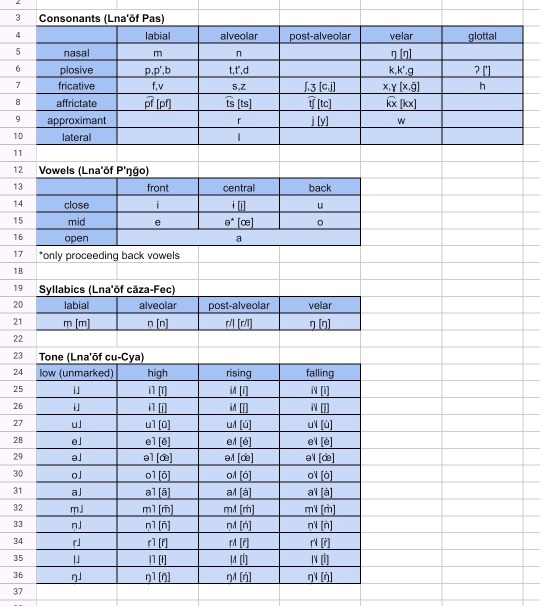
It has a syllable structure of (CC)V(CC). Plosives cannot exist word finally, clusters of consonants of the same manner are illegal, and vowel clusters are also not permitted. Syllabic consonants are grouped with vowels and behave much like them, carrying tone and stress, so they together are grouped and referred to as vocalics. Seraphic is a tonal language, employing the use of four tones: rising (á), falling (à), high (ā), and low (a). Low tones remained unmarked in both the Seraphic script and in romanization. Stress is syllable-independant. It will take either the ultimate, penultimate, or rarely the antepenultimate. Stress always falls on the syllable with a voiceless initial obstruent nearest to the end of the word. If none are available, it will fall on the syllable with an initial sonorant within the same parameters. Stress will never fall on a voiced obstruent. For clarity, I'll provide a key describing the pronunciation of the romanization.
Sounds that are similarly pronounced as they're read in American English:
m, n, p, b, t, d, k, g, f, v, s, z, y, w, l
Sounds that have special pronunciations:
ŋ, like the ng in English "sing"
p', like the ጴ in Amharic "ጴጥሮስ"
t', like the t' in Navajo "yá'át'ééh"
k', like the კ in Georgian "კაბა"
', like the the space within English "uh-oh"
c, like the sh in English "sharp"
j, like the s in English "measure"
x, like the gh in English "ugh"
ğ, like the γ in Greek "γάλα"
pf, like the pf in German "Pfirsiche"
ts, like the z in Italian "grazia"
tc, like the ch in English "chain"
kx, like the kh in Lakota "lakhóta"
r, like the rr in Spanish "perro", although occasionally like the r in Spanish "amarillo"
i, like the ee in English "meet"
į, like the ы in Russian "ты"
u, like the oo in English "boot"
e, like the é in French "beauté"
œ, like the a in English "Tina"
o, like the o in Classical Latin "sol"
a, like the a in English "bra" although this can change to be more forward or more backward.
Another letter that might trip people up is ł, which is meant to represent the high tone syllabic 'l'. Otherwise, syllabics are written the same as their pulmonic counterparts, with tone markers written when applicable.
Nouns
Nouns make up the bulk of the Seraphic lexicon. Every noun is grouped into one of seven classes:
Solar class: nouns related to seraphim or seraph-like beings, and seraph body parts. Prefix appears as zā-, zō-, zē-, s-, or ts-.
sēr = "person"
Astral class: nouns related to non-seraph animate lifeforms (their equivalent to "animals"). Prefix appears as ğr-, x, or kx-.
xuc = "cherub"
Vital class: nouns related to inanimate lifeforms (their equivalent to "plants"). Prefix appears as wā-, wō, w-, ū-, wē-, or wī-.
wējlux = "tree"
Terranean class: nouns related to landscapes, locations, and natural phenomena. Prefix appears as va-, vo-, vu-, f-, and pf-.
voxāl = "sun"
Metallic class: nouns related to inanimate objects, both natural and artificial. Prefix appears as ja-, jo-, c-, or tc-.
jağrú = "rock"
Lunar class: nouns related to abstract concepts, and terms related to time. Prefix appears as la-, lo-, le-, li-, y-, or l/ł-.
levren = "job"
Oceanic class: nouns related to general words, tangible concepts, numbers, all adjectives, and non-incorporated loanwords. Prefix appears as a/ā-, o/ō-, or aw-.
awuf = "group"
Adjectives do not agree in class, due to the fact that nouns originally are derived from adjectives, and noun classes acted as a way to differentiate between nouns and adjectives.
fa = "warm, hot"
jafa = "fire" (lit. "a hot thing")
When adjectives are used as predicatives, they decline into the oceanic class in order to take the procedurals (once more, will expand upon later).
Nouns also decline for four numbers: singular (one thing, usually unmarked), dual (two things, both things; suffixes as -ac, -oc, -œc, or -c), plural (things, many thing; suffixes as -n, -an, or -in), and collective (every thing, all things; suffixes as -āf/ōf, -áf/-óf, or -'ōf).
Seraphic doesn't use pronouns. Everything and everyone is referred to by name, including yourself. From our perspective, the Seraphic language constantly speaks in the third person. However, it can be repetitive to use the same name over and over again in a sentence, and sometimes you don't know the name of things, so they'll apply what I've called pro-forms. They consist of the demonstrative adjectives fl "this", sl "that", and xl "yon" declined into the Solar class and taking the place of the first, second, and third person respectively. For ease of reference, I'll provide the forms and their declensions below.
zāfl (I/me), zāflc (both of us), zāvlin (we/us), zāfláf (all of us)
zāsl (you), zāslc (both of you), zāzlin (you guys), zāsláf (all of you)
zōxl (they), zōxlc (both of them), zōğlin (many of them), zōxláf (all of them)
Seraphic makes no distinction in the gender of the speaker, in this regard. Although these resemble pronouns, they're not meant to be used as often as regular pronouns, and whenever possible it's much preferred that you refer to someone or something by name.
Adjectives and Prepositions
Adjectives are fairly straightforward. Adjectives follow the noun they modify (e.g. sēr tan "big person"), and agree with them in number (e.g. sēr tan "big person" vs sērn t'aŋon "big people"). Adjectives agree in the singular form with singular and collective nouns, and they agree in the plural form with dual and plural nouns.
There are three main types of adjectives: native adjectives (e.g. cna "good"), borrowed adjectives (e.g. anzn "nice"), and noun-derived adjectives (e.g. arfi/ofi "new"). Native and borrowed adjectives don't agree with noun classes, but noun-derived adjectives do. It originated from the animacy-based adjective agreement system in Proto-Seraphic, which has been lost in all other adjective instances. When you want to make a noun into an adjective you'll affix one of two prefixes to it: ar- (if agreeing with Solar, Astral, and Vital nouns) and o- (if agreeing with Terranean, Metallic, Lunar, and Oceanic nouns). There are specific rules on the forms each prefix takes based on the noun they're attached to:
"ār-" when preceeding high or falling vocalic syllables (e.g. sēr ārzājna "popular person")
"ar-" when preceeding low or rising vocalic syllables (e.g. wēn arfe "local fruit")
"ó-" when preceeding high or falling vocalic syllables (e.g. lalel ówē "grassy flavor")
"o-" when preceeding low or falling vocalic syllables (e.g. lesar olvulvren "economic problem")
"ōw-" when preceeding words that start with a vocalic (e.g. lnin ōwāsāvbas "momentary event")
Prepositions occur before the nouns they modify, and don't change form in any circumstance. There are currently 19 prepositions in the modern language, and they are usually connected to nouns via a hyphen (e.g. e-fe "at (the) place"):
cu = of; indicates possession
pr̄ = indicates the indirect object, equivalent to "to" in the phrase "The man sends the letter to me."
in/īn = as or like; indicates similarity or resemblance. Will either be low or high tone depending on the tone of the following syllable.
e/ē = at or on; indicates location.
tsa = near or for; indicates relative distance from a location or an action performed for the sake of the referent.
cni = without; indicates a lack of possession or company.
wa = in or inside of; indicates interior position.
tn = on top of, above, or before; indicates superior position or a prior instance in time.
pux = under, beneath, or after; indicates inferior position or a following instance in time.
pi = with, together with; indicates being in company of or making use of the referent.
fān = from or away from; indicates the motion of leaving the referent.
ku = out of; indicates motion from within the referent towards the exterior.
tun = into or through; indicates motion from outside the referent towards the interior.
xel = to or towards; indicates the motion of approaching the referent.
kxun = across; indicates motion from one location to another
pn̄ = around; indicates location surrounding the referrent.
cāza = between; indicates location in the middle of the referrent.
tē = after, behind; indicates posterior position.
fr = during; indicates a moment in time
Prepositions aren't combined in Collective Seraphic, but may be in certain instances in colloquial speech.
Procedurals
Okay, this is probably the most complicated part of Seraphic, so I'm going to need to get into things individually. First, I'll start with defining a procedural itself. Procedurals are the term I use for the prefixes used to describe the relationship or process of and between the agent noun and the patient noun. These are what act as the equivalent to "verbs" in earth languages. There are three in use:
Existential: used to denote a state of being or equivalence between agent and patient, or to the patient and itself. Equivalent to English "to be" (e.g. A is B, there is B). Usually prefixes as some variant of n-, m-, or ŋ-.
Actional: used to denote an action or process between the agent and patient, or with the patient and itself. Equivalent to English "to do" or "to act upon" (e.g. A acts upon B). Carries a connotation of agency and intent. Usually prefixes as some variant of re-, ra-, or r-.
Resultative: used to denote an occurence or change in state between agent and patient, or patient and itself. Equivalent to English "to become", "to happen", or "to change into" (e.g. A becomes B, B happens to A). Carries a connotation of passiveness or motion. Usually prefixes as some varient of ed- or ez-.
The procedural will change its form slightly depending on the class and declension pattern of the noun it modifies. It always affixes to the patient noun, demonstrating a relationship of an action and what is being acted upon. In this way, the patient can be clearly identified. In transitive or causative clauses, the word order is always S(P)O, with the agent acting as the subject and the patient as the object. In intransitive and passive clauses, the word order is always (P)S, with the patient acting as the subject and the agent demoted to the indirect object or omitted entirely.
Although seemingly limiting, using these three procedural, as well as prepositions, nouns, and adjectives, altogether can be used to make all sorts of verb equivalents that are called "procedural phrases". I'll demonstrate how to build a sentence now. First thing we need to know is the subject and object:
Sāx ... jafa (The child ... the fire)
Next, I'll add the actional procedural in the present tense to this.
Sāx rejafa (The child acts upon the fire)
By itself this is technically grammatically correct, but it doesn't really mean anything. It's too broad. So we add a prepositional phrase to specify exactly what action the child is taking towards the fire.
Sāx pi-sīman rejafa (The childs acts upon the fire with (their) eyes)
Now we know that the child is performing an action involving the use of their eyes. Now of course this could mean many different things in English, but in Seraphic the first thing that comes to mind would be fairly obvious: to see! Thus, "Sāx pi-sīman rejafa" would be the same as saying "The child sees the fire" in English! There are a lot of set phrases that equate to verbs, and remain consistent in their arrangement. Often differing phrases are a useful way to ascertain where someone is from or what their first language is.
Tense and Aspect
Seraphic has six main tenses: two pasts, two presents, and two futures. The two pasts consist of the recent past (happening recently) and the remote past (happening a long time ago), and they prefix and/or combine with the procedural.
Sāx pi-sīman ğrejafa (The child just saw the fire)
Sāx pi-sīman eğrejafa (The child saw the fire a while ago)
Similarly, the future tenses consist of the near future (will happen soon) and the distant future (will happen eventually).
Sāx pi-sīman drejafa (The child will soon see the fire)
Sāx pi-sīman izrejafa (The child will eventually see the fire)
The present tenses consist of a general present tense (happens) and the infinitive (to happen) which is used with auxiliaries and copulae and carries no presence in time.
Sāx pi-sīman rejafa (The child sees the fire)
Pi-sīman ezrejafa (To see a fire)
Whether someone considers an event to be nearer or farther in time from them is completely up to their discretion. There's no set timeframe for when to use the recent vs. remote past, it's all fairly subjective. However, whether you decide to use the recent or remote can really indicate whether you believe something to be in the distant past or future, or just a few moments ago or soon.
Seraphic also makes use of two copulae, the perfective -r and the imperfective -l, helping clitics that expand on the aspect of the procedural, i.e. how the procedural happens over time instead of when in time. The copulae are separate from the procedural, being placed directly before it and conjugating on their own similarly to the lexical procedural. When the copulae are in use, they are conjugated instead of the lexical procedural, while the lexical will be put into the infinitive. The exception to this is if the point in time is considered necessary to be stated for the sake of clarity or emphasis, in which case the lexical verb will also conjugate (though this isn't considered to be the default). The two copulae each conjugate to six tenses, and give 12 individual aspects in total. They are as follows, starting with the perfective:
āgxōnr - Pluperfect: indicates that the action happened at a point before some time in the past either specified or implied (e.g. āgxōnr nidsl "that has happened")
xōnr - Preterite: indicates that the action happened in the past with no reference to if it was completed recently or remotely. A general past (e.g. xōnr nidsl "that happened")
nar - Relative: indicates relative clauses, i.e. clauses that act to modify a noun similarly to an adjective. Equivalent to "that", "who", or "which" (e.g. lsl nar nidsl "the thing that happens")
ednr - Gnomic: indicates general truths, common knowledge, and aphorisms (e.g. ednr nezłsl "things happen")
t'enr - Future Simple: indicates the action will happen in the future with no regard to how near or far it is from the present (e.g. t'enr nidsl "that will happen")
āt'ēnr - Future Perfect: indicates that the action will happen before a time or event in the future (e.g. āt'ēnr nidsl "that will have happened")
And the imperfective:
ŋ̄xōzl - Discontinuous: indicates that an action was happening in the past, but is no longer happening in the present (e.g. ŋ̄xōzl nidsl "that used to happen")
xōzl - Habitual: indicates that an action is done often or out of habit (e.g. xōzl nidsl "that always happens")
īzl - Progressive: indicates that an action is happening at the very moment of conversation (e.g. īzl nidsl "that is happening")
nizl - Prospective: indicates that an action will be starting to, or is in the process of happening (e.g. nizl nidsl "that is about to happen")
t'ezl - Iterative: indicates that an action happens again, repeatedly, or more than one time based on context (e.g. t'ezl nidsl "that happens again" or "that happens again and again")
nt'ezl - Continuative: indicates that an action happens continuously and without end (e.g. nt'ezl nidsl "that still happens")
With both tense and aspects, this largely expands the capability of Seraphic in referring to time.
Moods
Seraphic makes use of seven modal particles to denote seven moods. They are always placed at the beginning of clauses, and no two modal particles can exist in the same clause. They are grouped into four categories: the declaritive (indicative and negative), the inferential (evidential and interrogative), the deontic (volitive and imperative), and the epistemic (subjunctive and conditional). They add extra clarity in the speakers mood or opinion concerning the clause they modify, and are as follows:
Indicative: base form of a clause. Indicates that the speaker is stating a fact or what exists, and is unmarked (e.g. idsl "that happens")
tu - Negative: indicates that the speaker is stating a fact that is untrue or what doesn't exist. Usually only appears in formal, official texts, as the first syllable of the procedural will chage tone to contrast as well and leaves the particle unneccesary in colloquial speech (e.g. tu īdsl "that doesn't happen")
cuc - Evidential: indicates that the speaker is stating a fact that they believe or understand to be true, regardless of having experienced it or not. (e.g. cuc idsl "apparently that happens") Direct evidentiality is denoted using a different method.
an/ān - Interrogative: indicates that the speaker is confirming whether a statement is or isn't true. Forms questions (e.g. an idsl? "does that happen?")
tcān - Volitive: indicates that the speaker desires for the statement to be true (e.g. tcān idsl "that wants to happen" or "that needs to happen" or "that should happen")
má - Imperative: indicates that the speaker is giving a command or suggestion, to themselves and/or to other referents. Functions additionally as a cohortative and a jussive (e.g. má idsl! "let that happen!")
tir - Subjunctive: indicates that the speaker believes the statement to be possible or likely (e.g. tir idsl "that could/would/might happen")
nun - Conditional: indicates that speaker believes the statement to be possible under specific circumstances or conditions (nun idsl "if/when that happens..."
Miscellaneous
That's about the basics of the Seraphic language outline. I'd like to eventually get into things like comparison, evidentiality, declension forms and the like, but those are all topics that definitely need their own individual posts. Real quick, I want to provide one more additional fact about Seraphic.
Seraphic uses base-16, meaning it groups numbers in sets of 16 instead of sets of 10 like we do. 1-16 would be written 1, 2, 3, 4, 5, 6, 7, 8, 9, A, B, C, D, E, F, 10. 10 would be read as 16, and equally 20 would be 32. They're still counting the same amount of things, they're just dividing it up differently!
Anyways that's about it, I hope to share more about Seraphic soon, and when the comic gets released I hope you'll all be able to read it and pick out the many many lines of Seraphic I've poured into it!
ŋKowīci cu-stux 'ōf tsa-levp'ā cu-zāsláf pi-lizt'n ğōdjasa! (Thank you all so much for reading!)
#conlang#constructed language#artlang#grammar#phonology#syntax#linguistics#seraphic#collective seraphic#info post#hope i didn't make a fool of myself in front of the whole community#accidentally showed the world i dont know shit abt linguistics gotdamn#im sure itll be fine#writing system tutorial forthcoming
22 notes
·
View notes